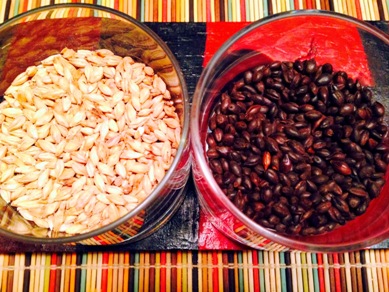
Welcome Greg Nagel to our new weekly Q&A Craft Beer 101.
Style, freshness and seasonality-the top three qualities to look for when choosing a beer as advised by our resident beer aficionado, Greg Nagel. Born in the Inland Empire, Greg migrated to the OC in the late 80’s. Freelance writer extraordinaire, he helms OCBeerBlog.com, an endeavor which spurred from his desire to “raise awareness, grow craft beer and be a part of the community.” Greg admits that he has enjoyed beer from a young age (dare we guess underage? But who’s judging?) and has arrived at his expertise through home brewing. “Home brewing has elevated my experience with beer evaluation,” says Greg. With infinite flavors and aromas available in the brewing marketplace, one can see why hands on experimentation affords him some extra umph in his hop receptors. Unbeknownst to those of us who don’t taste beer, travel and try tantalizing dishes for a living (what a rough life), darker beer does not ultimately denote stronger beer. Greg explains, “The darkness in beer is similar to why coffee is dark, it’s roasted. The strength of a beer is determined by how much fermentables are added.” “There is a beer for every mood,” Greg quips, so if you’re looking for the next great brew to stock up your cellar, don’t forget to follow the golden rules-look for style, freshness and seasonality. If you’re interested in impressing Greg (and taking advantage of his expertise), take him to Belgium. “Their use of spontaneous fermentation with wild yeast, fruit and various candi sugars make for truly unique flavors,” says the self taught lover of brews.
Q: Myth Busting Dark Beer: Does Dark Beer Connote Strong Beer?
A: One of the comments I hear quite often from the wine and cocktail world is “Dark beer looks so thick and strong.” Well, is dark beer strong and thick? Short answer-No, silly! Let’s take a brief look at what gives beer its booze, color and mouthfeel.
Alcohol wise, base malts (barley and sometimes wheat) are converted to fermentable sugars in a process called mashing. During fermentation, yeast cells eat the sugars and produce alcohol and carbon dioxide. More base malts mean higher alcohol! Plain base malt beers are pale golden-yellow in color and don’t get darker as they get stronger.
So, what makes beer dark? To make a dark beer (or amber, red, brown or black), a small percentage of specialty roasted or toasted malt is added in the mash of base malts. These specialty malts have been kilned at such a high temperature, there are no sugars left. No more sugar; no more alcohol. Roasted malts add color (think stouts, porters, brown ale), flavor and mouthfeel. Brewers can squeeze out notes of chocolate, roast and nutty flavors from roasted malts.
Belgian beers are an exception to the dark rule. To get darker syrup, candi syrup (derived from cooking beet sugar at various temperatures to get darker syrup) is often used. Candi sugar gives notes of vanilla, toffee and toasted bread while simultaneously lightening the mouthfeel. Turns out, yeast loves the stuff as well! Yeast eats the sugar, making a stronger beer and leaves the color and flavor components intact.
Mouthfeel is also controlled in the brewing process by temperature control when mashing. With a range of 146º to 156º. Brewers use a higher temperature to produce a thicker mouthfeel and use a lower temperature for a thinner mouthfeel. Temperature controls the complexity of sugars. At a higher temperature, the sugars produced are more complex. Yeast leaves the little bits of complexity that translates to sweetness and a more robust body.












